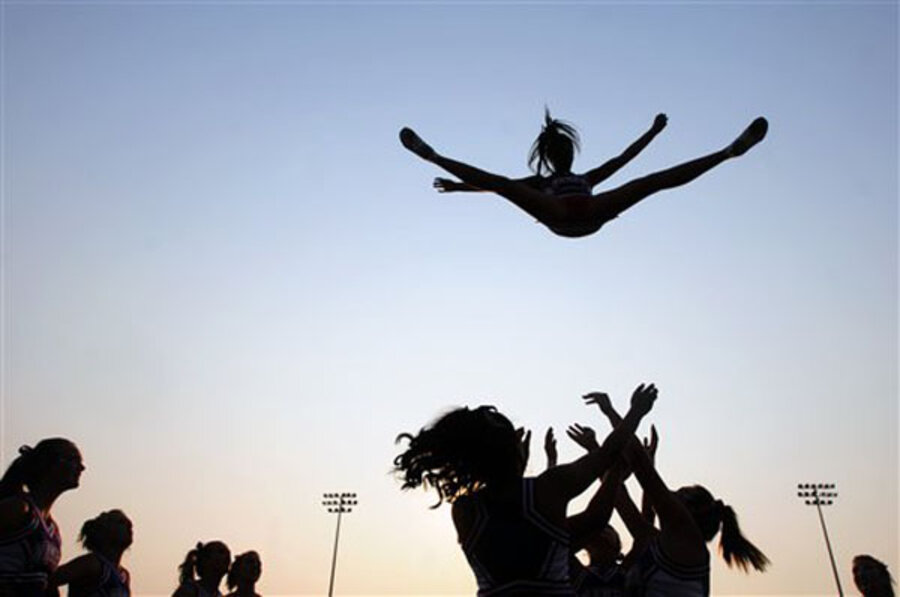Cheerleading safety: It's a sport, not a frivolity, say doctors
Loading...
| CHICAGO
Cheerleading isn't just jumping and waving pompoms – it has become as athletic and potentially as dangerous as a sport and should be designated one to improve safety, the nation's leading group of pediatricians says.
RELATED: Are you a 'Helicopter Parent?' take our QUIZ!
The number of cheerleaders injured each year has climbed dramatically in the past two decades. Common stunts that pose risks include tossing and flipping cheerleaders in the air and creating human pyramids that reach 15 feet high or more.
In a new policy statement released online Monday in the journal Pediatrics, the American Academy of Pediatrics says school sports associations should designate cheerleading as a sport, and make it subject to safety rules and better supervision. That would include on-site athletic trainers, limits on practice time and better qualified coaches, the academy says.
Just like other athletes, cheerleaders should be required to do conditioning exercises and undergo physical exams before joining the squad, the new policy says.
"Not everyone is fully aware of how cheerleading has evolved over the last couple of decades. It used to be just standing on the sidelines and doing cheers and maybe a few jumps," said Dr. Cynthia LaBella, a sports medicine specialist at Chicago's Lurie Children's Hospital and an author of the new policy.
But she said cheerleading often results in injuries that include severe sprains, broken arms and legs, neck injuries and concussions.
Last year, there were almost 37,000 emergency room visits for cheerleading injuries among girls aged 6 to 22, according to data from the Consumer Product Safety Commission. That's more than four times higher than in 1980, when cheerleading was tamer.
While there are still traditional cheerleading squads that support schools' athletic teams, some schools and private clubs have separate cheerleading teams that compete against other teams.
Kali Wald of Elburn, Ill., suffered a serious concussion last year during an acrobatic routine with her high school's competitive team; teammates tossed her in the air but she landed wrong twice, first on her upper back and neck, then on her head. Her father, Dave Wald, said her coaches didn't realize she was seriously injured and never called an ambulance. She still suffers from concussion symptoms, he said.
The Walds said they believes cheerleading should be considered a sport and made safer through better awareness of the rigors and the potential risks of the sport.
Injuries have increased as cheerleading has become more popular. Data suggest there are more than 3 million cheerleaders nationwide aged six and older, mostly girls. That includes about 400,000 in high school, according to data cited in the new policy. While the overall injury rate in high school cheerleading is lower than in other girls sports, including gymnastics, soccer and field hockey, the rate of serious injuries is higher, the academy noted.
Some schools and state high school sports associations already consider cheerleading a sport and require the kind of safety oversight that the academy is recommending. But many do not, said Jim Lord, executive director of the American Association of Cheerleading Coaches & Administrators. Some don't consider it a sport because not all cheerleading squads are involved in their own competitions, he said.
Lord said the academy's policy mirrors many of his group's safety recommendations for high schools and colleges.
That includes limiting the height of human pyramids in high school cheerleading to just two people. The academy also says routines that include pyramids, tumbling or tosses should not be performed on hard surfaces.
RELATED: Top 5 bullying myths - What you don't know about bullying
Lisa Kluchorosky, a sports medicine specialist who works with the academy and the National Athletic Trainers Association, said the new policy will help erase misconceptions that cheerleading is not very athletic.
"The statistics are compelling and you can't turn your head from that," she said.







